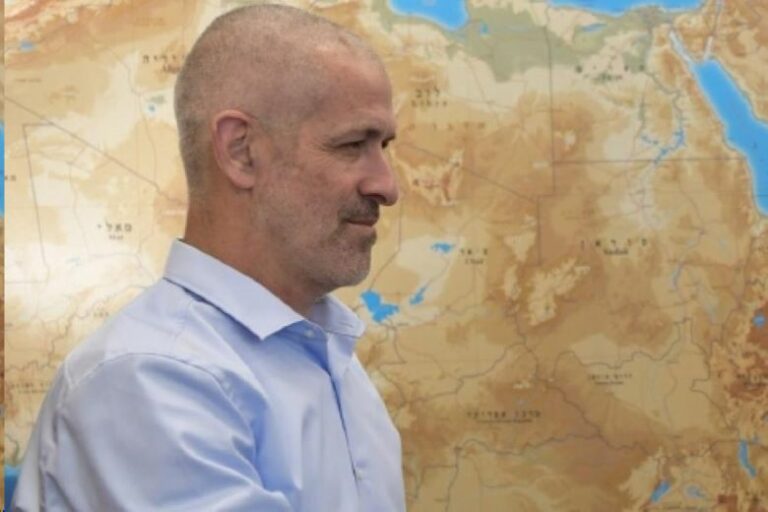Interior Secretary Ryan Zinke’s recommendation to shrink four sprawling national monuments in the U.S. West jeopardizes protections for ancient cliff dwellings, scenic canyons and habitat for endangered fish and threatened Mojave desert tortoises.
The recommendations, revealed in a leaked memo submitted to the White House, would scale back two huge Utah monuments — Bears Ears and Grand Staircase-Escalante — along with Nevada’s Gold Butte and Oregon’s Cascade-Siskiyou.
The monuments encompass an area larger than Connecticut and were created by Democratic presidents under a century-old law. Three were created or expanded in President Barack Obama’s final weeks in office.
President Donald Trump and other critics say presidents have lost sight of the original purpose of the law created by President Theodore Roosevelt, which was designed to protect particular historical or archaeological sites rather than wide expanses.
Environmental groups have vowed to take Trump to court if he approves Zinke’s recommendations.
A closer look at the four monuments set to be downsized:
———
BEARS EARS NATIONAL MONUMENT, UTAH
Creation of the 2,100-square-mile (5,500-square-kilometer) monument at the end of Obama’s tenure marked a victory for Native Americans and conservationists. It was a blow to Republican leaders who campaigned to prevent what they call a layer of unnecessary federal control that hurts local economies by closing the area to new energy development.
Tucked between existing national parks and the Navajo Nation, the monument is on land considered sacred to a coalition of tribes and is home to an estimated 100,000 archaeological sites. Tribal members visit the area to perform ceremonies, collect herbs and wood for medicinal and spiritual purposes and do healing rituals.
The monument features a mix of cliffs, plateaus, towering rock formations, rivers and canyons. In the memo, Zinke highlights the hiking, backpacking, canyoneering, mountain biking and rock climbing.
Utah’s congressional delegation and top state leaders vowed to work to get the monument repealed. Zinke’s recommendation to downsize it to a yet-to-be-determined size came after he toured Bears Ears in May and met with Gov. Gary Herbert and others who oppose the designation. State officials recommended a significant decrease to about 195 square miles.
Zinke suggests Trump ask Congress to make the tribes co-managers. Under Obama’s designation, they were given an advisory role.
———
CASCADE-SISKIYOU NATIONAL MONUMENT, OREGON
The Cascade-Siskiyou National Monument, covering 175 square miles (453 square kilometers) of mountains, forests and rivers along Oregon’s border with California, was expanded by then Obama in his last days. The new areas include habitat for endangered fish such as the shortnose sucker and Lost River sucker.
In a July visit, Zinke expressed doubts that much scientific study went behind the drawing of its boundaries. He stressed that the Antiquities Act of 1906, which authorizes a president to create a monument, limits their size “to the smallest area compatible with proper care and management of the objects to be protected.”
“Nobody knows how exactly the boundaries were made,” Zinke said. “Going back, were the boundaries made on the basis of science, best guess? And so those are the things I’m reviewing.”
In a 2011 report, a group of scientists said many of the region’s species relied on habitat outside the monument’s then-boundaries, where they faced threats from logging, grazing and development. The smaller monument also didn’t provide continuous protection across different elevations, which is important for migration, especially amid global warming, said the scientists, who supported the expansion.
Created by President Bill Clinton in 2000, Cascade-Siskiyou is the first monument set aside solely for the preservation of biodiversity. Two timber companies have challenged the legality of Obama’s expansion, saying it reduces the supply of timber sold and jeopardizes their supply.
———
GOLD BUTTE NATIONAL MONUMENT, NEVADA
Named for a ghost-town mining site near the confluence of the Colorado and Virgin rivers, the monument covers 464 square miles (1,202 square kilometers) of scenic land northeast of Lake Mead.
Dirt roads cross gold grasslands to rugged black mountains, red sandstone formations, Joshua tree forests and sites rich with Native American rock art and artifacts.
It is about 80 miles (128 kilometers) northeast of Las Vegas in the remote rangeland over which rancher Cliven Bundy let cows graze for decades before an armed standoff in 2014 with federal land agents.
Efforts began decades ago to protect and preserve Gold Butte as critical habitat for the threatened Mojave desert tortoise and rare local species of buckwheat and bear poppy plants.
Proponents, including former Democratic U.S. Sen. Harry Reid, tried for years to have it designated as a national conservation area before Obama made it a monument in December.
Republican members of Nevada’s congressional delegation have been vocal opponents. U.S. Sen. Dean Heller and Rep. Mark Amodei sponsored a measure this year to restrict the ability of future presidents to designate monuments without congressional approval.
———
GRAND STAIRCASE ESCALANTE NATIONAL MONUMENT, UTAH
Clinton created the monument in southern Utah in 1996 to preserve scenic cliffs, canyons, waterfalls and arches. Actor and Utah resident Robert Redford appeared at the ceremony.
In heavily Republican Utah, the move was viewed as a sneaky example of federal overreach that still irks GOP officials. Many Utah Republicans and some residents say it closed off too many areas to development — including one of the country’s largest known coal reserves — that could have helped pay for schools.
Gov. Herbert signed a resolution from state lawmakers this year asking Utah’s congressional delegation to support shrinking the monument that’s nearly 2,700 square miles (5,400 square kilometers), about the size of Delaware.
Zinke says in his memo to Trump that there are “several billion tons of coal and large oil deposits” within its boundaries. He also noted that while the permitted amount of grazing is the same as it was in 1996, the number of cattle in the monument has decreased because of restrictions on moving water lines, vegetation management and maintenance of fences and roads.
(AP)











